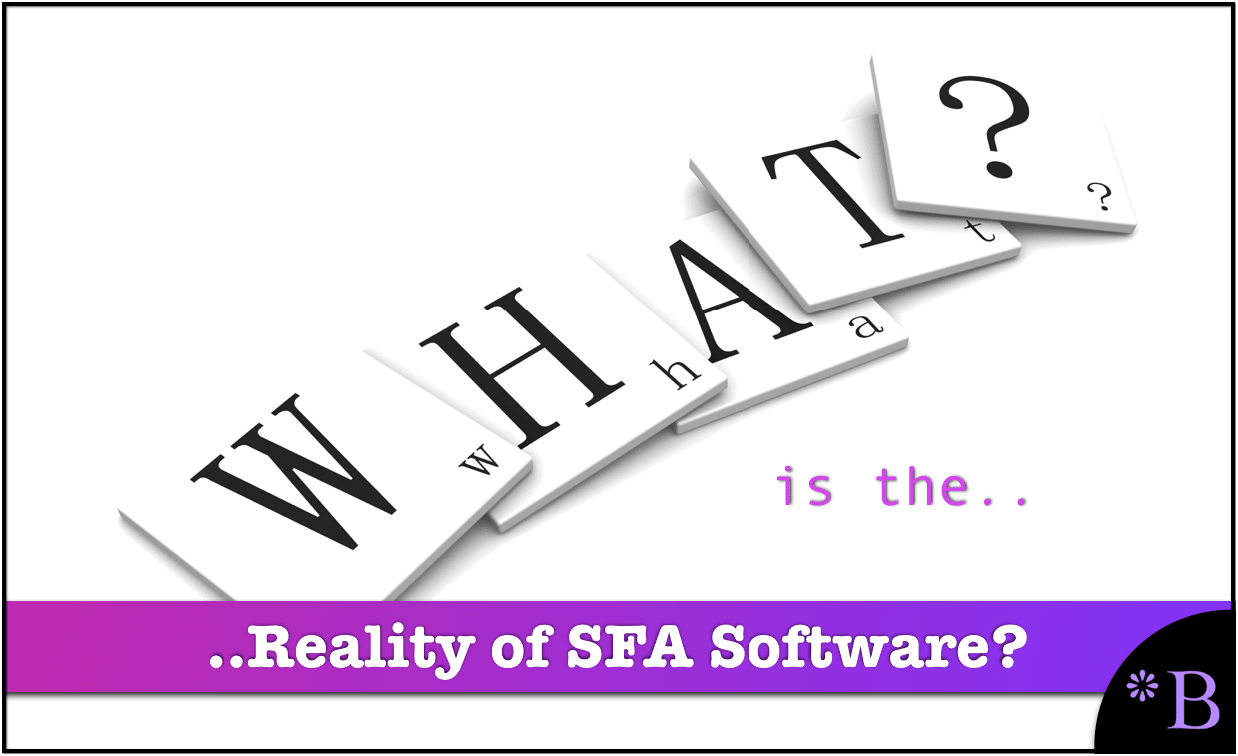The Top Sales Force Automation Analysis Complications
Executive Summary
- Sales Force Automation software analysis is often a process that just declares the company is ready for an SFA system.
- This article explains the top complications when trying to obtain an unbiased outcome.

Introduction
SFA software analysis is fraught with complications. In this article, we cover these complications and how we surmount them.
Our References
See our references for this article and related articles at this link.
Complication #1: Selecting a Conflicted Sales Force Automation System Selection Advisor
This is normally not a mentioned item. However, there is a greater probability that the company will select a financially biased sales force automation system selection advisor for their sales force automation readiness assessment that has financial relationships that it does not disclose to you. This means that they will most often rig the SFA analysis to state that the company is ready for an SFA system. And of course, if the vendor recommends the advisor, then the advisor will simply recommend that specific vendor’s CRM SFA. It is really just that simple.
Complication #2: Not Questioning The Assertions of Sales Force Automation Vendors and Consulting Firms
SFA systems came about because of the shortcomings of CRM systems and to account for enhancements to CRM functionalities, including things like configuration management, as well as functionality for higher-ups in the sales organization, such as territory management which allows things like rolling up the sales forecasts to see the overall forecast picture. The problem is that the claims made by CRM system vendors and consulting companies were never challenged or proven before the topic seemed to move over to SFA. The following list of items supposedly improved by CRM was published by Salesforce.
Boost in productivity. When you automate labor-intensive but low value-add activities like lead scoring, scheduling, reporting, and reminders, teams end up saving hours each week. They can use that time to create more meaningful interactions with prospects.
Improvement in lead-to-sales ratios. Sales automation platforms keep sales reps accountable and prospects engaged, both of which increase your chances of closing the sale.
Shortened sales cycle. Deals flow easier with automation. Salespeople can lean on technology to provide leads with the appropriate sales collateral at just the right time to move them along their decision-making process.
Insightful data. Sales technology can help you audit individual rep performances, your team’s pipeline, and an individual channel’s success. Plus, when companies leverage artificial intelligence, their sales automation tools identify opportunities for faster growth and efficiency improvements and generate more accurate sales forecasts.
Fewer lost leads. When reps are responsible for reporting and supporting all of their leads, a few will likely fall through the cracks. To minimize human error, companies use sales automation technology to prompt teams when leads go unaddressed or unanswered for too long.
Reduced costs per sale. Enterprise sales teams generally save money with sales automation. Rather than assigning manual labor toward time-intensive and low-value tasks, businesses let technology take care of them in the background. – Salesforce
What is curious about this list?
Well, all of these things were promised by CRM systems. Therefore, Salesforce is simply grafting or pushing forward the claims from its CRM system to its SFA system. Its really just a template of claims at this point. When the next thing comes along, say SFA Part 2, the exact same claims will be repeated again.
Have a problem attaining your CRM goals that were promised to you by your CRM vendor — that is ok, just use SFA.
People that work in sales will recognize this strategy as the “upsell.”
Anyone who hires the vast majority of advisors to perform a sales force automation analysis or evaluation will invariably just have these unproven assertions repeated back to them. If the advisor does not repeat these assertions, they can stay goodbye to any partnership and therefore deal flow that they receive from CRM/SFA software vendors.
Listening to Whom on SFA?
One of the worst pages on sales force automation is from Microsoft and can be seen here.
In addition to just being weak and generic content, it proposes Microsoft Dynamics CRM SFA, which is not a remotely competitive offering. However, this does not stop Microsoft from having one of the highest-ranked articles on SFA, according to Google.
And it’s not just Microsoft. We reviewed all of the top articles according to Google on SFA, and they all fit into the pattern of repeating mindless assertions. There were no independent articles in the top results. These are the articles potential buyers are reading to determining if they should buy an SFA for their company?
Complication #3: Not Considering Lock In
CRM systems are simpler functionality. Although Salesforce excels at locking customers in, partially by controlling the sales data, if one stays away from Salesforce and some of the mega-vendors that offer very uncompetitive CRM solutions, a company can retain a degree of freedom can migrate to a new CRM system. The problem with SFA is that it is more encompassing and is more prone to lock-in than using just a CRM system.
Conclusion
The SFA industry is designed to get customers “on the ramp” to implement SFA systems and extract the most out of them. In nearly all cases, the SFA analysis is just a fake process where the advisor states that the company is ready to move to an SFA system. This is then followed by an exposition of how good sales force automation systems are. This extractive model is one reason that the ROI on sales force automation systems is typically so low. This does not have to be the case, and there are many ways of changing this.